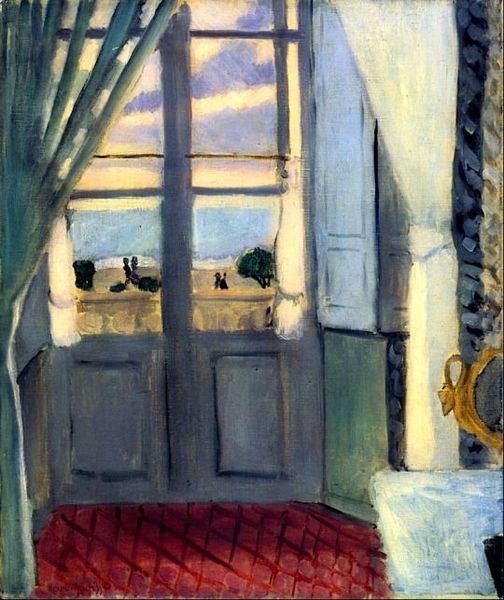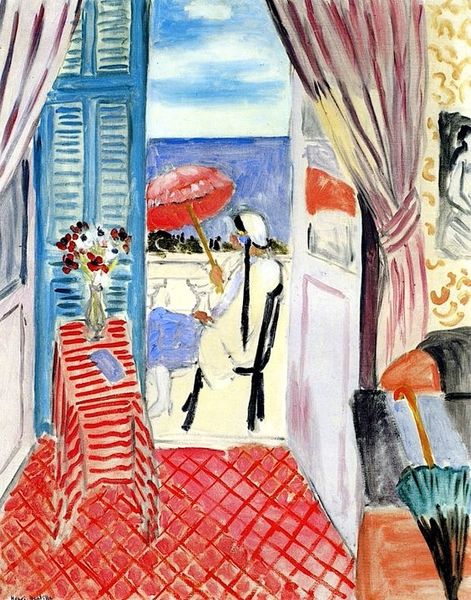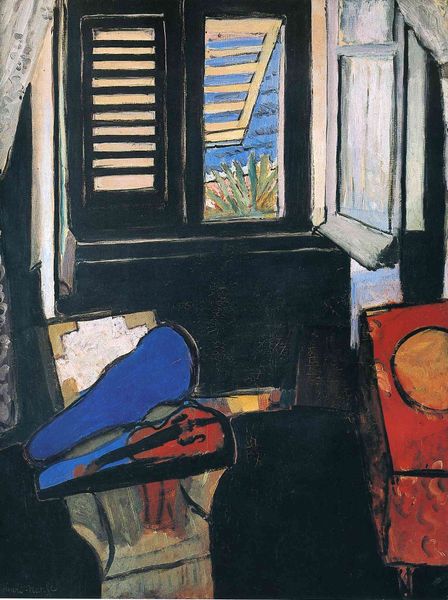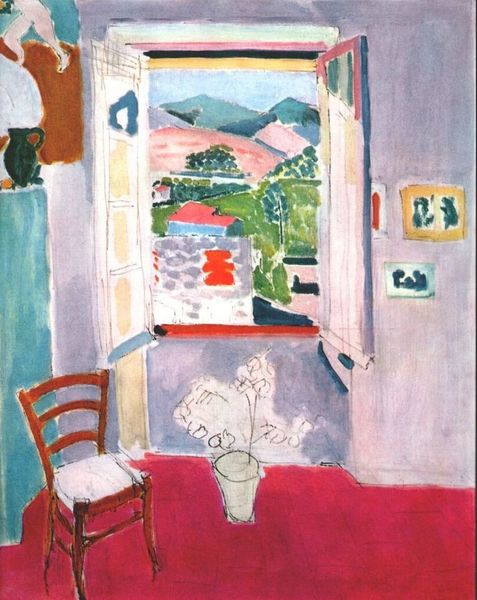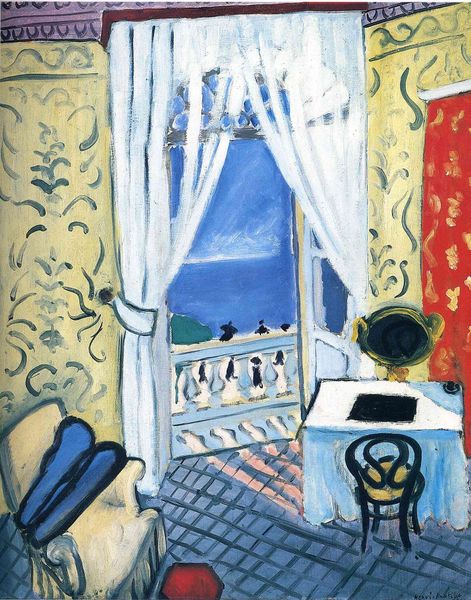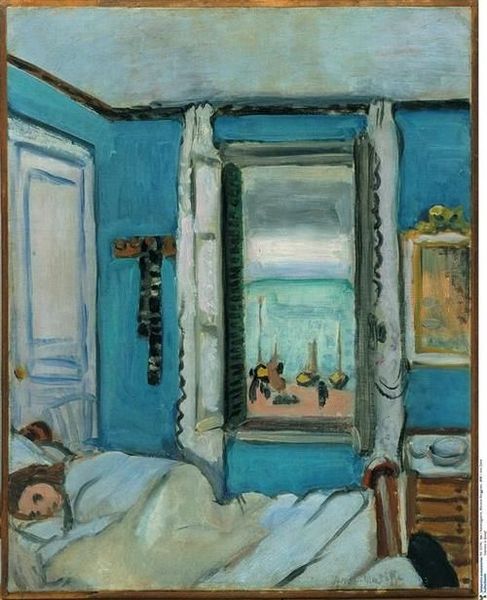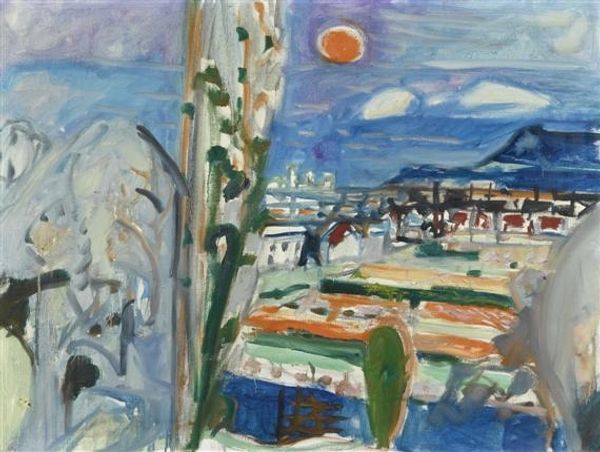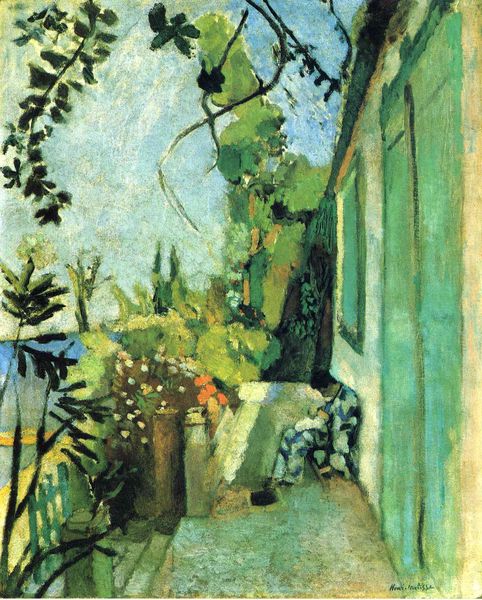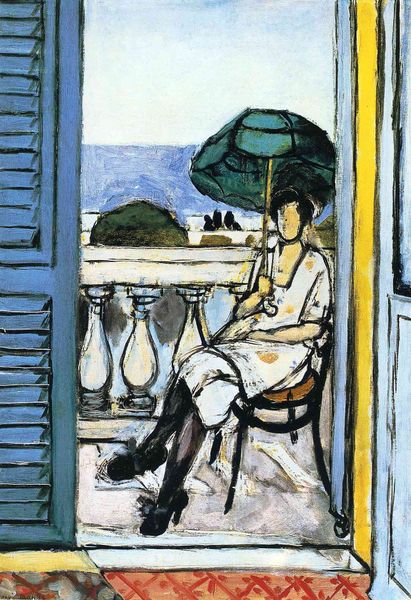
Copyright: Public domain US
Curator: Before us hangs Henri Matisse's "The Open Window," painted in 1918. A captivating scene rendered with oil on canvas. Editor: It has a dreamy quality. The cool blues and whites...it almost feels like looking at a memory. Curator: Indeed. Painted during a tumultuous time, as the Great War neared its end, works such as this offer a powerful exploration into escapism. Think about the social and political climate of that time – how did artists respond to such a tense landscape? Editor: You're right. But I can’t help feeling the interior space, with its defined geometry, also hints at containment, despite the expansive vista. Are the subjects on the beach in the distance trapped on the other side of this divide as much as we the viewers are in here? Curator: Containment certainly becomes a theme for artists who like Matisse were working in France during WWI, who sought to represent a country struggling through wartime—one still clinging to a long held tradition of beautiful landscape art even as its people continued to struggle against global trauma. The interior space versus the outside world plays out a broader feeling in response to French involvement in the war. What’s more, it represents Matisse’s personal escape to southern France during this tumultuous period. Editor: The palm tree on the other side is evocative. The bright paint suggests warm southern Europe but its color flattens the whole background of sand and surf so everything blurs and the eye rests uneasily on the heavy foreground shadows that seem more imposing. I keep wondering about this relationship between shadows and vivid, almost unnatural color; a technique common in Fauvism. Curator: The flatness, along with those almost jarring juxtapositions of colour, speaks to a rejection of traditional artistic expectations. The Fauvist influence is palpable. It shows a deliberate choice to use color not to imitate reality, but to evoke emotion and express subjective experience. It speaks volumes about individual versus collective trauma during that time. Editor: It’s a conversation between interiority and exteriority, trauma and serenity. Thanks, I really see it now! Curator: A worthwhile exploration indeed. Thank you.
Comments
No comments
Be the first to comment and join the conversation on the ultimate creative platform.
